
Royal Legacies: The 10 Kings Who Redefined World History
This comprehensive article examines history's most influential monarchs whose leadership, innovations, and policies transformed nations and left legacies that continue to impact our world today. From ancient Persia to medieval Europe and Africa, these remarkable rulers established new paradigms of governance, military strategy, and cultural development that reshaped human civilization.
HISTORYEMPIRES/HISTORYEDUCATION/KNOWLEDGEBIOGRAPHY/HISTORY
Keshav Jha
3/18/202514 min read
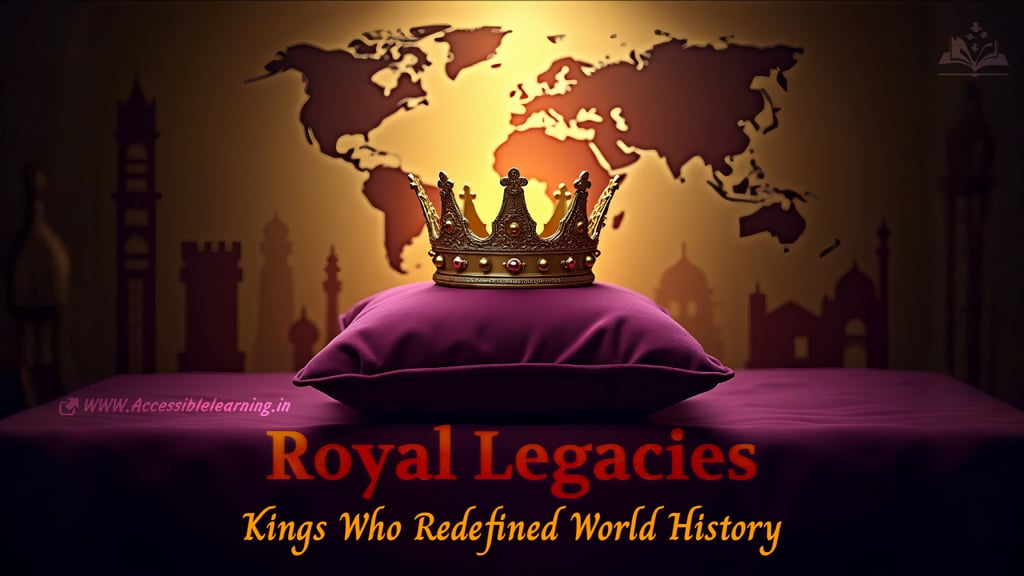

Throughout human civilization, monarchs have shaped nations, cultures, and the course of history itself. This article explores the ten most influential kings whose legacies continue to resonate through time. Each ruler's reign represents a pivotal chapter in history, demonstrating exceptional leadership, cultural impact, or transformative policies that changed the world.
Ashoka the Great (304-232 BCE)
Ashoka Maurya ruled the largest empire ever seen in the Indian subcontinent. After witnessing the devastation of the Kalinga War, Ashoka experienced a profound transformation, embracing Buddhism and renouncing violence.
His edicts, carved on pillars and rock faces throughout his empire, promoted religious tolerance, animal welfare, and social harmony. Ashoka built thousands of stupas and viharas, sponsored Buddhist missionaries, and established some of the first animal hospitals in recorded history.
His wheel symbol (the Dharmachakra) became central to Indian national identity and appears on India's national flag today. Ashoka's governance model, emphasizing moral leadership and social welfare, remains influential in political philosophy.
Ashoka's administrative innovations were remarkable. He divided his vast empire into provinces governed by appointed officials, established a sophisticated intelligence network, and created a judicial system with graduated punishments. His public works included rest houses for travelers, wells for drinking water, and hospitals for both humans and animals.
His influence on Buddhism cannot be overstated. By sending missionaries throughout Asia, including his son Mahinda and daughter Sanghamitta, to Sri Lanka, Ashoka helped transform Buddhism from a regional Indian sect into a world religion. Without his patronage, Buddhism might never have spread beyond the Indian subcontinent.
Cyrus the Great (600-530 BCE)
Cyrus II of Persia, commonly known as Cyrus the Great, established the first multicultural empire in history. His Achaemenid Empire stretched from the Mediterranean Sea to the Indus River, encompassing diverse peoples and cultures.
What truly distinguishes Cyrus was his revolutionary approach to governance. The Cyrus Cylinder, discovered in Babylon, documents his policy of religious tolerance and respect for local traditions. Rather than imposing Persian customs, he allowed conquered peoples to maintain their cultural identities while unifying them under a central administration.
His governance model influenced later empires, including those of Alexander the Great and the Romans. Cyrus's emphasis on human rights and religious freedom remains remarkably progressive even by contemporary standards.
Cyrus's military strategies were equally innovative. He developed a professional standing army with specialized units and sophisticated logistics. His conquest of Babylon in 539 BCE was accomplished with minimal bloodshed by diverting the Euphrates River and entering the city while its defenders celebrated a festival.
His legacy extends to Jewish history as well. After conquering Babylon, Cyrus freed the Jews from their captivity and permitted them to return to Jerusalem and rebuild their temple. This act earned him mention in the Hebrew Bible as a divine instrument and the only non-Jewish figure to be called "messiah."

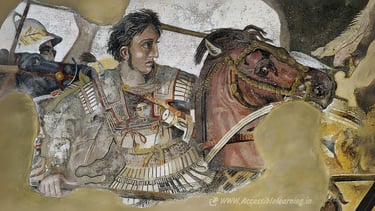
Alexander the Great (356-323 BCE)
Alexander III of Macedon earned his epithet "the Great" through military brilliance and cultural vision. In just 13 years, Alexander conquered the Persian Empire and extended his rule from Greece to northwestern India.
Beyond military conquest, Alexander's lasting impact lies in the Hellenistic period he inaugurated. By establishing Greek-style cities throughout his empire and encouraging cultural exchange between East and West, he created a cosmopolitan civilization that blended Greek, Persian, Egyptian, and Indian influences.
This cultural fusion catalyzed advancements in science, philosophy, and art that laid the groundwork for modern Western civilization. His legacy endures in everything from urban planning to religious syncretism.
Alexander's military innovations changed warfare forever. His use of the sarissa (a long pike) in the Macedonian phalanx, combined with heavy cavalry attacks and flexible light infantry, created an unbeatable combined-arms approach. His siegecraft, demonstrated at Tyre and the Sogdian Rock, overcame previously impregnable fortifications.
His educational background was equally impressive. Tutored by Aristotle himself, Alexander carried the works of Homer into battle and spread Greek philosophical ideas throughout his conquests. His vision of a united mankind—demonstrated by his mass marriage ceremony at Susa, where he and 92 of his officers married Persian noblewomen—was centuries ahead of its time.
Charlemagne (742-814 CE)
Charles the Great, or Charlemagne, united much of Western Europe for the first time since the fall of the Roman Empire. His Carolingian Empire laid the foundation for modern France and Germany.
Charlemagne's cultural initiatives, known as the Carolingian Renaissance, revitalized learning and preserved classical knowledge. He established schools, standardized currency, and reformed the legal system. His court attracted scholars from across Europe who collected and copied ancient manuscripts, preserving works that might otherwise have been lost.
His coronation as Holy Roman Emperor in 800 CE established the concept of a unified Christian Europe, influencing European politics for centuries. Charlemagne's governance model, blending Germanic traditions with Roman administrative techniques, shaped medieval European institutions.
Charlemagne's educational reforms were particularly impactful. Under the direction of the scholar Alcuin of York, his palace school at Aachen developed the Carolingian minuscule script—a standardized handwriting that improved readability and became the basis for modern lowercase letters. This innovation made books more accessible and facilitated the preservation of classical texts.
His military campaigns extended Christianity throughout Europe, sometimes through forced conversion. The Saxon Wars, lasting over 30 years, brought the Germanic tribes into the Christian fold. His defensive systems, including marches (militarized border regions), protected Europe from Viking, Muslim, and Hungarian invasions.
Genghis Khan (1162-1227 CE)
Temüjin, better known as Genghis Khan, united the nomadic tribes of Mongolia and created the largest contiguous land empire in history. His military innovations, including the composite bow and sophisticated cavalry tactics, revolutionized warfare.
Beyond conquest, Genghis Khan established a merit-based administration, religious tolerance, and the first international postal system. The Pax Mongolica (Mongol Peace) facilitated trade and cultural exchange across Eurasia, connecting East Asia with Europe and the Middle East.
Genetic studies suggest that approximately 1 in 200 men worldwide are direct descendants of Genghis Khan. His legacy endures in modern Mongolia, where he is celebrated as a national hero and cultural icon.
Genghis Khan's legal code, the Yassa, was revolutionary in many respects. It established diplomatic immunity for ambassadors and messengers, prohibited the kidnapping of women, banned the enslavement of fellow Mongols, and declared all religions equal under law. While strict—theft was punishable by death—it created a unified legal framework across diverse territories.
His military intelligence system was centuries ahead of its time. The Mongols conducted detailed reconnaissance before campaigns, created accurate maps, and maintained a communication network using horse relay stations called yams. This system could transmit messages at an unprecedented speed of 200-300 kilometers per day across the vast empire.
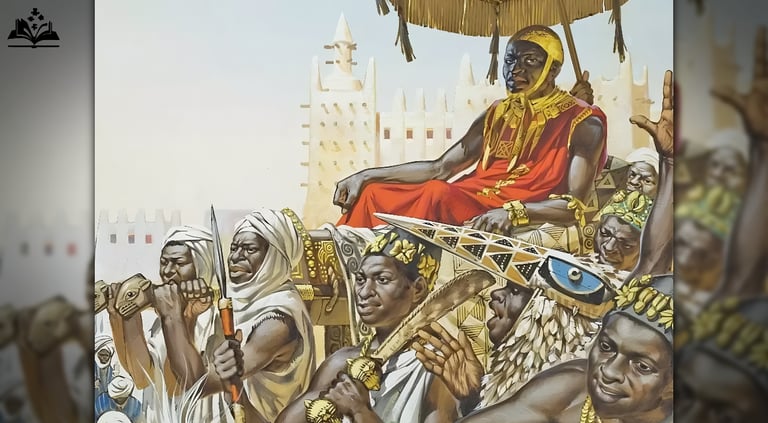

Mansa Musa I (1280-1337 CE)
Mansa Musa ruled the Mali Empire during its golden age, controlling vast territories in West Africa. His wealth, primarily from gold and salt mines, was so immense that his pilgrimage to Mecca in 1324–1325 caused economic inflation in every city he visited.
Under Mansa Musa's rule, Timbuktu became a center of learning and trade. He commissioned architectural marvels, including the Djinguereber Mosque, and established Sankore University, one of the world's oldest higher education institutions.
Mansa Musa's pilgrimage introduced the wealth and sophistication of West African kingdoms to the wider world, challenging Eurocentric historical narratives. His reign represents the height of West African imperial power and cultural influence.
The scale of Mansa Musa's wealth is difficult to comprehend. Contemporary accounts state that his caravan included 60,000 people and 100 camels carrying 300 pounds of gold each. He distributed so much gold in Cairo that its value was depressed for over a decade. Modern economists have suggested he may have been the wealthiest person in history, with a net worth equivalent to hundreds of billions in today's currency.
His governance structures were sophisticated and effective. The Mali Empire under Mansa Musa was divided into provinces led by appointed governors. His military maintained peace across trade routes spanning thousands of miles. The empire's stability and prosperity attracted scholars from across the Muslim world, making Timbuktu a center of Islamic learning with libraries containing hundreds of thousands of manuscripts.
Henry VIII of England (1491-1547 CE)
Henry VIII transformed England through his break with the Roman Catholic Church and the establishment of the Church of England. This religious revolution had profound political, social, and economic consequences.
The dissolution of monasteries redistributed vast wealth and land, creating a new class of landed gentry. Henry's expansion of the Royal Navy laid the groundwork for future British naval supremacy. His centralization of power strengthened the English monarchy at the expense of feudal nobility.
Henry's six marriages and the succession crisis they precipitated led to significant constitutional developments. The religious reforms he initiated, though motivated by personal and political concerns, ultimately contributed to the development of Protestant thought in England.
Henry VIII's legal reforms were equally transformative. The Laws in Wales Acts 1535-1542 incorporated Wales fully into the Kingdom of England. The Buggery Act of 1533 brought morality under state control rather than church authority. The Statute of Uses and the Statute of Wills revolutionized English property law and inheritance practices.
His patronage of the arts and education left a lasting legacy. Henry founded Trinity College, Cambridge, and Christ Church, Oxford. He was an accomplished musician who composed music, played multiple instruments, and collected over 70 musical instruments. His court employed Hans Holbein the Younger, whose portraits defined Tudor visual culture. The King James Bible, completed decades after his death, was a direct consequence of his break with Rome.
Louis XIV of France (1638-1715 CE)
Louis XIV, the "Sun King," reigned for 72 years, the longest documented reign of any European monarch. His absolutist approach to monarchy is encapsulated in his famous statement, "L'État, c'est moi" ("I am the state").
Under Louis XIV, France became the dominant European power. He centralized government authority, reformated the military, and patronized the arts. The Palace of Versailles, his crowning architectural achievement, embodied the grandeur of absolutist monarchy and served as a model for royal residences across Europe.
Louis's codification of court etiquette and ceremonies created a template for royal behavior that influenced monarchies worldwide. His wars and expensive building projects strained France's finances, setting the stage for later upheavals, including the French Revolution.
Louis XIV's cultural impact was immense. He established the Académie Royale de Danse, the Académie d'Opéra, and the Comédie-Française, institutionalizing French performing arts. Under his patronage, French replaced Latin as the language of international diplomacy and culture. The decorative arts flourished with the establishment of the Gobelins Manufactory and the Savonnerie carpet factory, setting standards for luxury goods worldwide.
His military innovations transformed European warfare. Under the guidance of ministers like Le Tellier and Louvois, Louis created a professional standing army with standardized weapons, uniforms, and training. His military engineer Vauban revolutionized both fortress design and siege warfare, developing the zigzag approach trenches still taught in military academies today. By the end of his reign, France could field over 400,000 soldiers—unprecedented in European history.
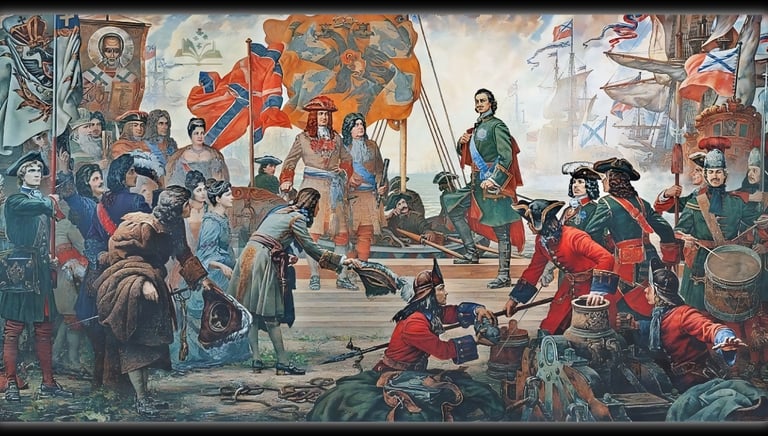

Peter the Great of Russia (1672-1725 CE)
Peter I transformed Russia from a medieval state into a European power through ambitious reforms and cultural revolution. Standing nearly seven feet tall, Peter's physical stature matched his outsized impact on Russian history.
He modernized the Russian military, created Russia's first navy, and established St. Petersburg as a "window to Europe." Peter's reforms extended to government administration, education, dress, and social customs. He personally learned shipbuilding and other trades during his travels in Western Europe, bringing technical knowledge back to Russia.
Peter's greatest legacy was reorienting Russia toward Western Europe, initiating a cultural dialogue that continues to this day. His reforms laid the groundwork for Russia's emergence as a global power in subsequent centuries.
Peter's educational initiatives were revolutionary for Russia. He established the School of Mathematics and Navigation, Russia's first secular school, and sent nobles abroad to study. He founded the Russian Academy of Sciences and commissioned the translation of foreign scientific and technical works. His civil service reforms introduced a meritocratic Table of Ranks that allowed non-nobles to achieve status through service to the state.
His methods were often brutal. Peter personally conducted interrogations and executions during the suppression of the Streltsy revolt. He forced nobles to shave their traditional beards and adopt Western clothing, imposing a beard tax on those who refused. He subordinated the Russian Orthodox Church to state control by abolishing the patriarchate and establishing the Holy Synod. Yet these harsh measures rapidly modernized a nation that had fallen centuries behind its European neighbors.
Akbar the Great (1542-1605 CE)
Jalal-ud-din Muhammad Akbar, the third Mughal emperor, established one of history's most sophisticated multicultural empires across the Indian subcontinent. His reign marked the pinnacle of Mughal influence and power.
Akbar's religious policy, Din-i-Ilahi (Divine Faith), attempted to synthesize elements from various religions, including Islam, Hinduism, Zoroastrianism, and Christianity. He abolished the jizya tax on non-Muslims, employed Hindus in senior government positions, and engaged in theological discussions with representatives of different faiths in his Ibadat Khana (House of Worship).
His administrative systems demonstrated remarkable ingenuity. The mansabdari system organized both civil and military administration through ranks determining salary and military responsibilities. His land revenue system, developed with Raja Todar Mal, established standardized measurement, classification of land based on fertility, and fixed taxation rates that remained the basis of Indian revenue systems into the British colonial period.
Akbar's cultural patronage blended Persian, Indian, and Islamic traditions, creating the distinctive Indo-Persian culture that characterizes Mughal art and architecture. His court included the Navaratnas (Nine Jewels)—accomplished individuals in various fields, including the musician Tansen and the wit Birbal. The Persian-language chronicles of his reign, like the Akbarnama, represent masterpieces of Mughal manuscript illumination.
Suleiman the Magnificent (1494-1566 CE)
Suleiman I ruled the Ottoman Empire at its zenith, expanding its territory across three continents, from Vienna to the Persian Gulf and from Crimea to Algeria. His contemporaries called him "the Lawgiver" (Kanuni) for his complete restructuring of Ottoman legal systems.
Under Suleiman's leadership, Ottoman architecture, art, and literature flourished. His chief architect, Mimar Sinan, designed over 300 structures, including the Süleymaniye Mosque complex in Istanbul, which integrated hospitals, schools, libraries, and public kitchens into religious centers. Ottoman miniature painting, calligraphy, ceramics, and textiles reached their artistic peak during his reign.
Suleiman's military campaigns reshaped European history. His conquest of Belgrade (1521) and Rhodes (1522) secured Ottoman dominance in the eastern Mediterranean. His victory at Mohács (1526) ended the medieval Kingdom of Hungary and brought much of Central Europe under Ottoman influence. His naval commander Barbarossa Hayreddin Pasha established Ottoman control over much of the Mediterranean against Habsburg and Venetian powers.
His diplomatic initiatives were equally impactful. Suleiman allied with Francis I of France against their common Habsburg enemies, establishing the first formal alliance between a Muslim empire and a Christian kingdom. He provided protection to Jews expelled from Spain and Portugal, making the Ottoman Empire a center of Sephardic culture. His correspondence with Elizabeth I of England initiated trade relations that influenced early modern European economics.
Suleiman's domestic reforms standardized criminal and civil law, protected the rights of religious minorities, limited arbitrary taxation, and established price controls to prevent exploitation of consumers. His meritocratic system allowed talented individuals from diverse backgrounds to rise to the highest positions, regardless of birth. The stability and prosperity of the Ottoman Empire under his rule made Istanbul the largest city in Europe, with a population exceeding 500,000.
His personal interest in poetry and literature (writing under the pen name "Muhibbi") elevated Ottoman Turkish to a literary language rivaling Persian and Arabic. The period known as the Ottoman Golden Age coincided precisely with his reign, and his royal workshops produced manuscripts, ceramics, and metalwork that rank among the greatest achievements in Islamic art.
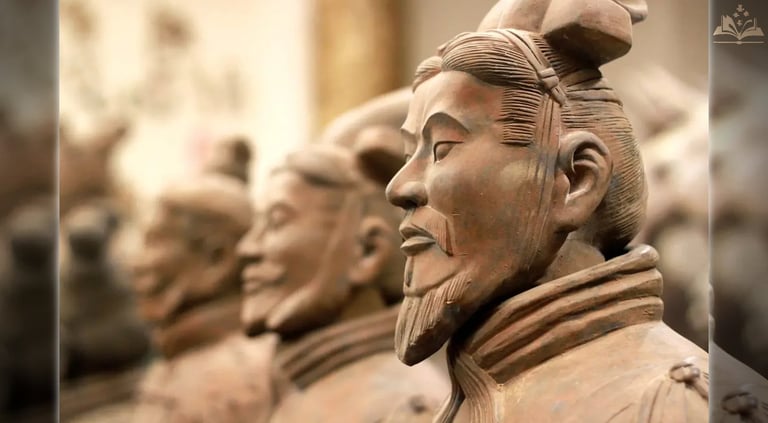

Emperor Qin Shi Huang (259-210 BCE)
Ying Zheng, who proclaimed himself Qin Shi Huang (First Emperor of Qin), unified China after the chaotic Warring States period. His short but transformative reign established the foundations of the Chinese imperial system that would endure for over two millennia.
His most enduring accomplishment was the standardization of Chinese writing, weights, measures, and axle widths for carts. These seemingly mundane reforms enabled effective administration and commerce across a vast territory with diverse regional practices. His legal system, based on legalist philosophy, created a centralized bureaucratic state governed by strict laws rather than aristocratic privilege.
The Great Wall as we know it today began under Qin Shi Huang, who connected existing defensive structures into a unified barrier against northern nomadic tribes. His massive construction projects, while accomplished through forced labor and immense human cost, created infrastructure that unified China geographically and economically.
The Terracotta Army, discovered in 1974, reveals the scale of his ambitions and his concept of imperial authority extending beyond death. This underground army of over 8,000 life-sized soldiers, each with unique facial features, represents one of archaeology's greatest discoveries and demonstrates the advanced artistic and organizational capabilities of the Qin dynasty.
His centralized political model—dividing the empire into administrative units governed by appointed officials rather than hereditary nobles—became the template for all subsequent Chinese dynasties. Though later portrayed as a tyrannical figure in Confucian histories, his innovations in governance remain the foundation of Chinese state organization to this day.
Ramesses II (1303-1213 BCE)
Ramesses II, often called Ramesses the Great, ruled ancient Egypt for 66 years during its New Kingdom period, building monuments and temples on an unprecedented scale. His military campaigns secured Egypt's borders and expanded its influence throughout the Near East.
The Battle of Kadesh against the Hittite Empire, though a tactical draw, resulted in the world's first recorded peace treaty, preserved in both Egyptian and Hittite versions. This diplomatic achievement established peaceful relations between the two superpowers of the ancient Near East for generations.
Ramesses's building program transformed Egypt's architectural landscape. His mortuary temple, the Ramesseum, introduced innovative architectural techniques. Abu Simbel, with its colossal statues carved into a mountainside, was positioned so precisely that twice a year, the sun illuminates the innermost sanctuary. His new capital, Pi-Ramesses in the Nile Delta, featured innovative water management systems and became one of the largest cities in the ancient world.
His effective propaganda established him as the archetypal Egyptian pharaoh. His images and cartouches appear on more monuments than any other pharaoh. Later rulers adopted his royal titulary and imagery, attempting to associate themselves with his prestige. His mummified remains, discovered in 1881 and now in Cairo's National Museum of Egyptian Civilization, show he lived into his early 90s—extraordinary longevity for the ancient world.
Many scholars believe Ramesses II was the pharaoh mentioned in the biblical Exodus narrative, though archaeological evidence remains inconclusive. Regardless, his reign represents the pinnacle of ancient Egyptian power, wealth, and cultural achievement.
King David (c. 1000 BCE)
Though historical details of King David's life remain contested among scholars, his impact on world history through religious and cultural influence is undeniable. According to biblical accounts, David unified the tribes of Israel into a single kingdom with Jerusalem as its capital.
David's importance transcends his military or political achievements. As the presumed author of many biblical psalms, he shaped Jewish liturgical traditions that continue to influence religious practices across Judaism, Christianity, and Islam. The Davidic covenant—God's promise of an eternal dynasty—became central to Jewish messianic expectations and later Christian theology regarding Jesus's lineage.
Archaeological discoveries like the Tel Dan Stele (a 9th-century BCE inscription mentioning the "House of David") suggest a historical basis for the Davidic dynasty. His life story—rising from shepherd to king, maintaining faith through trials, falling through moral failings yet finding redemption—creates a complex model of leadership and spirituality that resonates across religious traditions.
David's establishment of Jerusalem as his capital transformed a small Canaanite settlement into one of the world's most significant religious centers. His son Solomon would build the First Temple there, establishing Jerusalem's sacred status that continues to influence geopolitics today. The Star of David, now emblazoned on Israel's flag, symbolizes Jewish identity worldwide.
In Islamic tradition, David (Dawud) is revered as a prophet and righteous king. The Quran praises his wisdom, devotion, and God-given talents. These multiple religious perspectives on David illustrate how certain monarchs transcend their historical context to achieve lasting cultural significance.
These fifteen kings represent diverse cultures, regions, and periods, yet each irrevocably altered the course of history through innovation, conquest, or cultural transformation. Their legacies continue to influence contemporary governance, cultural institutions, and national identities.
What distinguishes these monarchs is not merely their power but how they wielded it—establishing new paradigms of leadership, fostering cultural and intellectual growth, or instituting reforms that resonated across centuries. Their stories remind us that individual leaders can fundamentally shape human civilization, for better or worse.
The diversity of their achievements demonstrates multiple paths to historical significance. Some, like Cyrus and Ashoka, are remembered for their humanitarian policies and ethical governance. Others, like Genghis Khan and Alexander, changed the world map through military brilliance. Cultural innovators like Augustus and Louis XIV transformed art, architecture, and social norms. Religious revolutionaries like Henry VIII altered spiritual landscapes and institutional structures.
As we navigate contemporary challenges, the successes and failures of these historical rulers offer valuable insights into effective governance, cultural synthesis, and transformative leadership. Their stories reveal the complex interplay between individual vision and broader historical forces—reminding us that while circumstances shape opportunities, exceptional individuals can redirect the course of history itself.
The enduring fascination with these kings speaks to our continuing interest in how personal character shapes public outcomes. In studying their lives and legacies, we gain perspective on leadership, power, and the fragile relationship between ambition and wisdom that determines whether a ruler's impact proves constructive or destructive across the centuries.
Subscribe To Our Newsletter
All © Copyright reserved by Accessible-Learning Hub
| Terms & Conditions
Knowledge is power. Learn with Us. 📚


